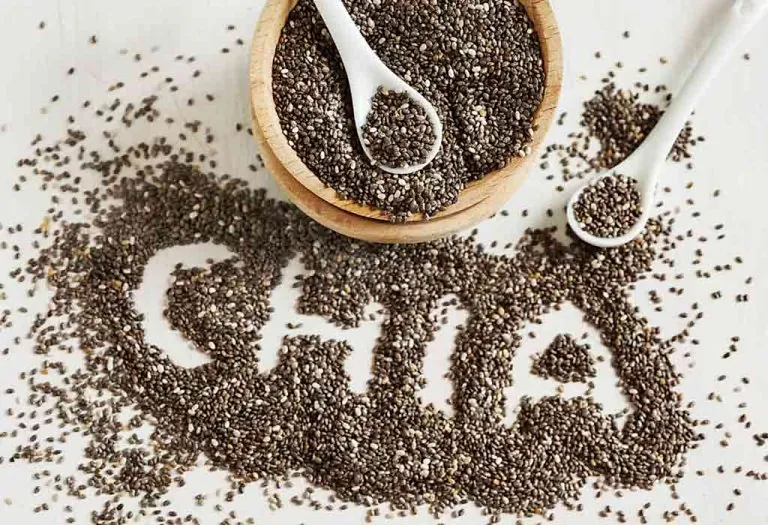Breastfeeding With Large Breasts – Concerns & Tips for Nursing

Some women naturally have large breasts, while many others find their breasts to have increased substantially after pregnancy. Initially, this might seem like a welcome proposition for both the mother and the child. But when you start to figure out how to breastfeed with large breasts, it will feel like an entire challenge by itself. Big breast feeding can present unique difficulties, from finding comfortable positions to ensuring a proper latch. Breastfeeding with large breasts may require extra support, patience, and sometimes even specialized techniques to make the process easier for both mom and baby.
Concerns Regarding Breastfeeding With Large Breasts
In the initial stages, the baby and the mother both are learning to figure out the basics of breastfeeding and what works for them. In such a case, having large breasts can get difficult for you to figure out where your nipple is exactly located and where the baby’s mouth is. This can result in quite some time and struggle in making sure that your baby has latched on to your breast properly.
In certain pregnancy cases, women experience some pain after delivery. If you are one of those, sitting in a position that appropriately supports your breasts and the baby while controlling your pain, can get quite difficult.
Large breasts can cause you to worry that while the baby breastfeeds, the breast might end up suffocating him by covering his nose or the entire face. Or that he might end up drinking a lot of milk, resulting in other problems (1).
Do Bigger Breasts Produce More Breast Milk?
A woman’s breasts are made up of fat, milk-producing tissue, and supportive tissue. The amount of milk a mother can make depends on the milk-producing tissue—not the size of her breasts, since bigger breasts usually just mean more fat (2). However, research shows that overweight or obese moms (who often have larger breasts) sometimes produce less milk. This might be because extra fat stores higher levels of progesterone, a hormone that can interfere with milk supply (3).
Best Nursing Positions for Moms With Larger Breasts
Breastfeeding with larger breasts can be comfortable and successful with the right positions. Finding a posture that supports both mom and baby while ensuring a good latch is key. Here are some of the most effective breastfeeding positions for large breasts (4):
1. Football Hold
In this position, you tuck your baby under your arm (like a football) with their legs pointing behind you. Use pillows to raise them to breast height. It’s especially useful for moms recovering from C-sections or those with heavy breasts.
Advantages
- Great control over the baby’s head and latch
- Keeps breast weight from pressing on the baby’s face
- Works well after C-sections or if the baby is small
Disadvantages
- Requires pillows for proper support
- Can be tricky to do in tight spaces (like a chair or couch)
2. Side-Lying Position
Lie on your side with your baby facing you, tummy-to-tummy. This relaxed position is perfect for nighttime feedings or when you need rest. Gravity helps position the breast naturally.
Advantages
- Takes pressure off mom’s back and arms
- Lets gravity help position the breast naturally
- Ideal for nighttime or tired moms
Disadvantages
- Needs practice to align baby correctly
- Not ideal for very young babies with weak neck control
3. Cradle Hold (Modified for Larger Breasts)
A twist on the classic cradle hold, this version uses your forearm to lift and support your breast. Tilt your baby slightly backwards to help them latch deeper.
Advantages
- Classic, comfortable position when adjusted properly
- Allows mom to use her forearm to lift and support the breast
Disadvantages
- May require extra pillows for elevation
- Baby’s latch can be harder to control without support
4. Laid-Back (Biological) Nursing
Recline at a 45-degree angle and lay your baby on your chest. Gravity helps them latch naturally while your breasts stay supported against your body.
Advantages
- Uses gravity to help the baby latch naturally
- Takes breast weight off mom’s chest
- Encourages skin-to-skin bonding
Disadvantages
- Requires a reclined, comfortable surface
- Not as easy to do in upright chairs or public spaces
Nursing Tips for Women With Large Breasts
Here are a few tips you can keep in mind when breastfeeding if you have large breasts (5).
1. Ask for Assistance
Many mothers tend to refrain from asking for help. This could probably be because they are slightly shy or reserved about something so intimate. Or at times, especially with newer mothers, they might feel that they are supposed to know this intuitively and asking for help might make them look like a bad mother.
None of this is true and you should ask for help and resolve your queries as much as possible. All sorts of mothers with all types of breasts require help and assistance in getting a hang of breastfeeding.
2. Learn From Your Baby
Large breasts have a higher capacity to hold milk than others. This can result in your baby feeding a lot more than usual, and over time, having longer feeding cycles with longer gaps in the between as well. As important as it is to follow a schedule of breastfeeding, it is just as required to learn from the baby as well and know the signs of his hunger. Also, once he gets the hang of the breasts, he can easily latch on to them, big or small.
3. Keep a Tab on the Baby’s Weight
If large breasts can hold a lot of milk, they can also end up with not enough milk at times, too. And this cannot be immediately evident with the frequent feeding cycles of the baby. Therefore, it is necessary to have a nurse or the doctor keep a check on the baby’s weight regularly. Neither should he be lacking in the appropriate weight gain over time, nor should his milk consumption be so much, that the weight gain is tremendous. Adhering to a healthy middle makes it best both for the mother as well as the child.
4. Handling Engorged Breasts
Certain mothers have medium to small breasts prior to pregnancy. However, after pregnancy, their breasts seem to swell up a lot more than expected. Such a condition is termed as breast engorgement, which could also be due to an overabundant production and supply of breastmilk. These can very quickly get painful for the mother and cause further obstacles in being able to feed the baby properly. It is necessary to get a doctor’s opinion in treating these conditions since they could result in complications later on.
5. Keeping the Breasts Soft
With a large production of breastmilk, the breasts can very quickly get full, even when it isn’t the time for the baby’s feeding. This makes the breasts extremely dense and heavy, which is uncomfortable for the mother. Moreover, when the baby does try to feed, he can’t latch properly since the breast is hard and he can’t get his mouth completely over the nipple. Therefore, it is necessary for you to retrieve the excess breastmilk by either using your hands to pump it naturally or using a breast pump and storing it for feeding later.
6. Learning With a Mirror
A proper and comfortable position is extremely necessary for the baby to feed properly. Making use of a mirror can help you understand the placement of the baby’s mouth and the location of your nipple. Since large breasts can make it difficult for you to see it from your point of view, checking the mirror’s reflection and making adjustments accordingly can help achieve it rather easily.
7. The Tried-and-Tested C-Hold
This is one of the easiest and simplest techniques of ensuring successful breastfeeding in case of large breasts. In the c-hold, the mother holds the breast in the area of the nipple and flattens it such that the baby can easily hold it in his mouth. This makes it easier to aim the breast and let your baby latch on properly onto it.
8. Other Breastfeeding Positions
Not all mothers can master the c-hold or can sit up in a position to feed her baby accordingly. With the guidance and advice of nursing consultants, you can try feeding your baby using the football hold position by cradling your baby like a football, or by lying down on your bed sideways and propping the breasts in such a way that your baby can feed off them.
9. Supporting the Breasts
Large breasts are heavy and can cause back pain and neck pain, especially when accompanied with long cycles of breastfeeding. Purchase new nursing bras that can keep your breasts supported as well as allow easy access to the nipple for breastfeeding. Don’t try out previous bras since their sizes will not be appropriate.
10. Use Nursing Pillows Strategically
Extra support can make all the difference. Place a firm nursing pillow or folded towel under your breast to help elevate it to baby’s mouth level. This prevents hunching over and reduces arm fatigue during long feeds.
11. Check for Proper Latch Frequently
With larger breasts, it’s easy for babies to slip into shallow latches. Regularly listen for swallowing sounds (not just sucking). Check that baby’s mouth covers both nipple and part of the areola. Watch for flanged lips (not tucked in).
12. Preparation Is Half the Work
If you already have large breasts or seem to see quite an enlargement of breasts during pregnancy, it is helpful to educate yourself and be more aware of the possible problems and techniques you can employ to make your postpartum life easier and pain-free.
These were some tips on how to breastfeed with big breasts.
Is Breastfeeding Possible After Breast Surgery?
Yes, breastfeeding is often possible after breast surgery, but it largely depends on the type of surgery and how it was performed. Procedures like breast augmentation (implants) typically have a lower risk of interfering with breastfeeding, especially if the incision is made under the breast or through the armpit (6). However, surgeries involving significant tissue removal, such as breast reduction or those involving the areola, may damage milk ducts or nerves crucial for milk production and let-down. Some women may produce less milk, but partial breastfeeding is still beneficial. Consulting a lactation consultant early can help develop strategies for successful nursing.
FAQs
1. Can large breasts cause breathing difficulties for my baby during nursing?
When it comes to breastfeeding with huge breasts, some mothers worry their breast size might obstruct their baby’s nose while feeding. While rare, this can happen if the breast isn’t properly supported. Using the C-hold technique or a rolled muslin cloth under the breast can lift tissue away from the baby’s face. Side-lying or laid-back positions also reduce this risk.
2. Do large breasts affect pumping efficiency?
The curvature and weight of larger breasts can sometimes create a poor seal with standard pump flanges, reducing output. Look for breast pumps with adjustable suction patterns and consider trying different flange sizes—some women with wider areolas need larger flanges than expected. Hands-on pumping (gentle compression while expressing) can help empty ducts more thoroughly. Positioning the pump slightly upward, with your breast supported on a rolled towel, often improves milk flow by aligning with natural duct structures.
3. Are large breasts more prone to clogged ducts or infections?
Their density and weight can make drainage less efficient, increasing risks. To minimise issues, avoid prolonged pressure on breasts (e.g., tight bras or sleeping facedown). At the first sign of a clog (tender lumps), apply warmth before feeding, massage toward the nipple, and ensure the baby’s chin points toward the blockage during feeds. Persistent clogs or fever require medical attention to prevent mastitis.
This was all about large breasts and breastfeeding. Breastfeeding challenges come in all sorts and forms. And with large breasts, these are further enhanced to make it even complicated than before. By staying informed and aware of breastfeeding positions for large breasts, you can reduce your anxiety and take care of your baby to keep you and your baby both safe and healthy throughout the journey.
References/Resources:
1. International Lactation Consultant Association – Breastfeeding Tips for Women with Large Breasts
2. Australian Breastfeeding Association – Breastfeeding with large breasts
3. International Milk Genomics Consortium – Do Larger Breasts Make More Milk?
4. American Academy of Pediatrics- Positions For Breastfeeding
5. Chester County Hospital – Breastfeeding with Large Breasts
6. Johns Hopkins Medicine – Think You Can’t Breastfeed After Implants? Think Again
Also Read:
Breastfeeding in Public
Breastfeeding with Flat Nipples
Breastfeeding with Small Breast
Breastfeeding with Tubular Breast
Was This Article Helpful?
Parenting is a huge responsibility, for you as a caregiver, but also for us as a parenting content platform. We understand that and take our responsibility of creating credible content seriously. FirstCry Parenting articles are written and published only after extensive research using factually sound references to deliver quality content that is accurate, validated by experts, and completely reliable. To understand how we go about creating content that is credible, read our editorial policy here.





























